Instruction
How balance affects your swing shape
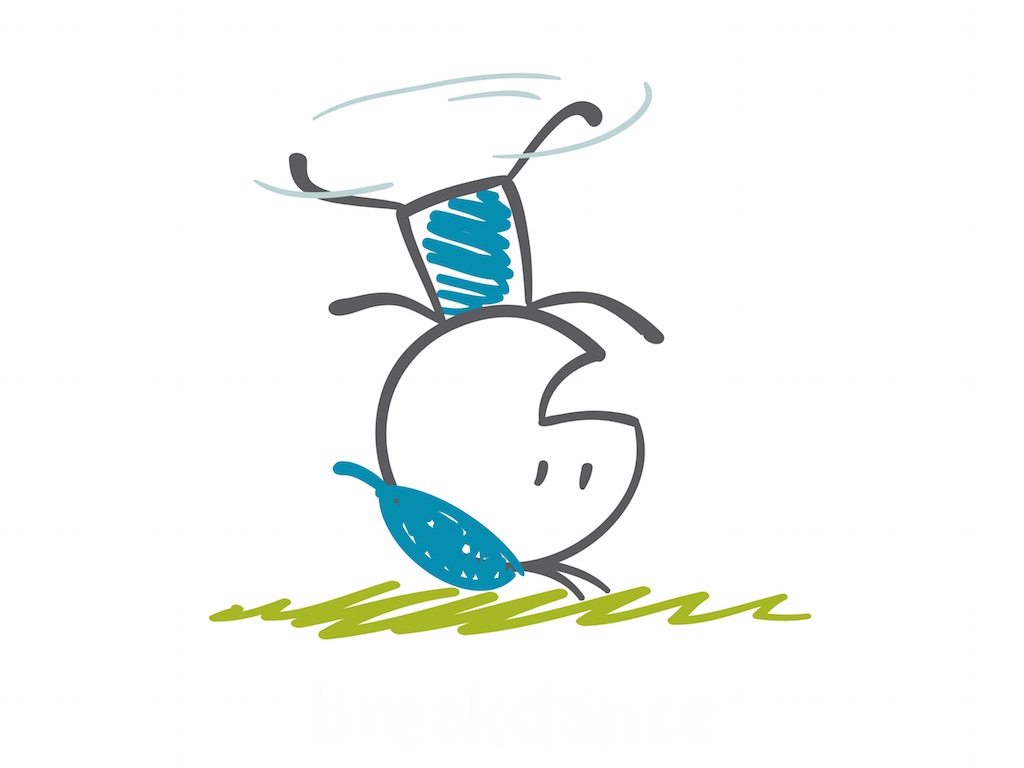
When golfers swing in balance, they generally hit the ball more solid and less crooked. Most GolfWRX readers already know that, but what they may not know is that balance can play a significant role in the shape of their swings, which of course will affect the shape of their shots.
There are few absolutes in the game of golf, but I am seeing more frequently through the use of technology that golfers who swing in balance also have better control of the delivery of the golf club through impact. Those of us who struggle with our balance throughout the swing are frequently making recovery motions to maintain our balance, which in turn negatively effects our ability to deliver the golf club to the ball consistently on the downswing.
One of my regular students came to me recently, struggling with bad ball contact and an ugly slice. My launch monitor dutifully shared with me obvious characteristics of a slice swing. He’s a right-handed golfer, and his swing path was 12.3 degrees to the left, while his club face was 5.2 degrees to the right of his path.
Another tracking device that I like to use when gathering data about a student’s technique is the BodiTrak Pressure Mat system, which allows me to analyze a golfer’s center of pressure throughout the swing. This provided me with some interesting insight as to why my golfer’s swing had slice characteristics. At the top of my student’s golf swing, much of his pressure was towards his toes, 61 percent on his target foot and 76 percent on his trail foot.
I find that many of my students who have a center of pressure that moves toward their toes during their backswing can produce one of two major swing flaws:
- To counter balance their heavy toe pressure, their arms swing very deep behind their bodies on their backswing to try to stay in balance.
- Their lack of balance limits their ability to make a big enough turn to get the golf club on an ideal downswing plane.
Both toe-heavy backswing characteristics frequently evolve into a steeper downswing plane and a slice swing path.
I shared this observation with my student, and encouraged him to keep his center of pressure more centered by exaggerating the feeling and trying to keep his weight a little toward his heels. He reacted beautifully to this observation.
His very next swing produced the following results:
- At the top part of his swing, his pressure moved to 61 percent on his left heel and 63 percent on his right heel.
- This change in foot pressure produced a bigger back swing turn, which evolved into a different downswing delivery and draw ball flight characteristics (a swing path of 5.1 degrees to the right and a club face that was 2.7 degree to the left of his path).
By simply focusing solely on his balance, my student’s “athlete” was able to react subconsciously in a completely different manner that produced much more solid ball contact and his preferred ball flight.
We all know how important balance is to making good, consistent contact. Perhaps now, you can add the characteristic of balance to help improve your swing shape.
Good luck!
- LIKE127
- LEGIT12
- WOW5
- LOL1
- IDHT0
- FLOP0
- OB0
- SHANK6
Instruction
The Wedge Guy: The easiest-to-learn golf basic

My golf learning began with this simple fact – if you don’t have a fundamentally sound hold on the golf club, it is practically impossible for your body to execute a fundamentally sound golf swing. I’m still a big believer that the golf swing is much easier to execute if you begin with the proper hold on the club.
As you might imagine, I come into contact with hundreds of golfers of all skill levels. And it is very rare to see a good player with a bad hold on the golf club. There are some exceptions, for sure, but they are very few and very far between, and they typically have beat so many balls with their poor grip that they’ve found a way to work around it.
The reality of biophysics is that the body moves only in certain ways – and the particulars of the way you hold the golf club can totally prevent a sound swing motion that allows the club to release properly through the impact zone. The wonderful thing is that anyone can learn how to put a fundamentally sound hold on the golf club, and you can practice it anywhere your hands are not otherwise engaged, like watching TV or just sitting and relaxing.
Whether you prefer an overlap, interlock or full-finger (not baseball!) grip on the club, the same fundamentals apply. Here are the major grip faults I see most often, in the order of the frequency:
Mis-aligned hands
By this I mean that the palms of the two hands are not parallel to each other. Too many golfers have a weak left hand and strong right, or vice versa. The easiest way to learn how to hold the club with your palms aligned properly is to grip a plain wooden ruler or yardstick. It forces the hands to align properly and shows you how that feels. If you grip and re-grip a yardstick several times, then grip a club, you’ll see that the learning curve is almost immediate.
The position of the grip in the upper/left hand
I also observe many golfers who have the butt of the grip too far into the heel pad of the upper hand (the left hand for right-handed players). It’s amazing how much easier it is to release the club through the ball if even 1/4-1/2″ of the butt is beyond the left heel pad. Try this yourself to see what I mean. Swing the club freely with just your left hand and notice the difference in its release from when you hold it at the end of the grip, versus gripping down even a half inch.
To help you really understand how this works, go to the range and hit shots with your five-iron gripped down a full inch to make the club the same length as your seven-iron. You will probably see an amazing shot shape difference, and likely not see as much distance loss as you would expect.
Too much lower (right) hand on the club
It seems like almost all golfers of 8-10 handicap or higher have the club too far into the palm of the lower hand, because that feels “good” if you are trying to control the path of the clubhead to the ball. But the golf swing is not an effort to hit at the ball – it is a swing of the club. The proper hold on the club has the grip underneath the pad at the base of the fingers. This will likely feel “weak” to you — like you cannot control the club like that. EXACTLY. You should not be trying to control the club with your lower/master hand.
Gripping too tightly
Nearly all golfers hold the club too tightly, which tenses up the forearms and prevents a proper release of the club through impact. In order for the club to move back and through properly, you must feel that the club is controlled by the last three fingers of the upper hand, and the middle two fingers of the lower hand. If you engage your thumbs and forefingers in “holding” the club, the result will almost always be a grip that is too tight. Try this for yourself. Hold the club in your upper hand only, and squeeze firmly with just the last three fingers, with the forefinger and thumb off the club entirely. You have good control, but your forearms are not tense. Then begin to squeeze down with your thumb and forefinger and observe the tensing of the entire forearm. This is the way we are made, so the key to preventing tenseness in the arms is to hold the club very lightly with the “pinchers” — the thumbs and forefingers.
So, those are what I believe are the four fundamentals of a good grip. Anyone can learn them in their home or office very quickly. There is no easier way to improve your ball striking consistency and add distance than giving more attention to the way you hold the golf club.
More from the Wedge Guy
- The Wedge Guy: Golf mastery begins with your wedge game
- The Wedge Guy: Why golf is 20 times harder than brain surgery
- The Wedge Guy: Musings on the golf ball rollback
- LIKE83
- LEGIT13
- WOW5
- LOL1
- IDHT0
- FLOP4
- OB1
- SHANK8
Instruction
Clement: Stop ripping off your swing with this drill!

Not the dreaded headcover under the armpit drill! As if your body is defective and can’t function by itself! Have you seen how incredible the human machine is with all the incredible feats of agility all kinds of athletes are accomplishing? You think your body is so defective (the good Lord is laughing his head off at you) that it needs a headcover tucked under the armpit so you can swing like T-Rex?
- LIKE0
- LEGIT2
- WOW2
- LOL0
- IDHT0
- FLOP0
- OB0
- SHANK2
Instruction
How a towel can fix your golf swing

This is a classic drill that has been used for decades. However, the world of marketed training aids has grown so much during that time that this simple practice has been virtually forgotten. Because why teach people how to play golf using everyday items when you can create and sell a product that reinforces the same thing? Nevertheless, I am here to give you helpful advice without running to the nearest Edwin Watts or adding something to your Amazon cart.
For the “scoring clubs,” having a solid connection between the arms and body during the swing, especially through impact, is paramount to creating long-lasting consistency. And keeping that connection throughout the swing helps rotate the shoulders more to generate more power to help you hit it farther. So, how does this drill work, and what will your game benefit from it? Well, let’s get into it.
Setup
You can use this for basic chip shots up to complete swings. I use this with every club in my bag, up to a 9 or 8-iron. It’s natural to create incrementally more separation between the arms and body as you progress up the set. So doing this with a high iron or a wood is not recommended.
While you set up to hit a ball, simply tuck the towel underneath both armpits. The length of the towel will determine how tight it will be across your chest but don’t make it so loose that it gets in the way of your vision. After both sides are tucked, make some focused swings, keeping both arms firmly connected to the body during the backswing and follow through. (Note: It’s normal to lose connection on your lead arm during your finishing pose.) When you’re ready, put a ball in the way of those swings and get to work.

Get a Better Shoulder Turn
Many of us struggle to have proper shoulder rotation in our golf swing, especially during long layoffs. Making a swing that is all arms and no shoulders is a surefire way to have less control with wedges and less distance with full swings. Notice how I can get in a similar-looking position in both 60° wedge photos. However, one is weak and uncontrollable, while the other is strong and connected. One allows me to use my larger muscles to create my swing, and one doesn’t. The follow-through is another critical point where having a good connection, as well as solid shoulder rotation, is a must. This drill is great for those who tend to have a “chicken wing” form in their lead arm, which happens when it becomes separated from the body through impact.
In full swings, getting your shoulders to rotate in your golf swing is a great way to reinforce proper weight distribution. If your swing is all arms, it’s much harder to get your weight to naturally shift to the inside part of your trail foot in the backswing. Sure, you could make the mistake of “sliding” to get weight on your back foot, but that doesn’t fix the issue. You must turn into your trial leg to generate power. Additionally, look at the difference in separation between my hands and my head in the 8-iron examples. The green picture has more separation and has my hands lower. This will help me lessen my angle of attack and make it easier to hit the inside part of the golf ball, rather than the over-the-top move that the other picture produces.


Stay Better Connected in the Backswing
When you don’t keep everything in your upper body working as one, getting to a good spot at the top of your swing is very hard to do. It would take impeccable timing along with great hand-eye coordination to hit quality shots with any sort of regularity if the arms are working separately from the body.
Notice in the red pictures of both my 60-degree wedge and 8-iron how high my hands are and the fact you can clearly see my shoulder through the gap in my arms. That has happened because the right arm, just above my elbow, has become totally disconnected from my body. That separation causes me to lift my hands as well as lose some of the extension in my left arm. This has been corrected in the green pictures by using this drill to reinforce that connection. It will also make you focus on keeping the lead arm close to your body as well. Because the moment either one loses that relationship, the towel falls.


Conclusion
I have been diligent this year in finding a few drills that target some of the issues that plague my golf game; either by simply forgetting fundamental things or by coming to terms with the faults that have bitten me my whole career. I have found that having a few drills to fall back on to reinforce certain feelings helps me find my game a little easier, and the “towel drill” is most definitely one of them.
- LIKE12
- LEGIT2
- WOW2
- LOL0
- IDHT0
- FLOP2
- OB0
- SHANK8
-

 19th Hole2 weeks ago
19th Hole2 weeks agoJohn Daly stuns fans into silence with brutal opening tee shot on PGA Tour Champions
-

 19th Hole6 days ago
19th Hole6 days agoThings got heated at the Houston Open between Tony Finau and Alejandro Tosti. Here’s why
-

 19th Hole3 days ago
19th Hole3 days agoReport: Tiger Woods has ‘eliminated sex’ in preparation for the 2024 Masters
-

 19th Hole2 weeks ago
19th Hole2 weeks ago2-time major champ announces shock retirement from the sport at age of 33
-

 19th Hole3 weeks ago
19th Hole3 weeks agoEdoardo Molinari reveals the latest PGA Tour golfer to turn down ‘good offer’ from LIV Golf
-

 19th Hole2 weeks ago
19th Hole2 weeks agoCharlie Woods finds it tough going on American Junior Golf Association debut
-

 19th Hole3 weeks ago
19th Hole3 weeks agoScottie Scheffler had an interesting response when asked how he ‘quiets the noise’ following Players victory
-

 19th Hole5 days ago
19th Hole5 days agoAddiction, spinal fusion, and scam artists – Everything Anthony Kim revealed in candid interview with David Feherty

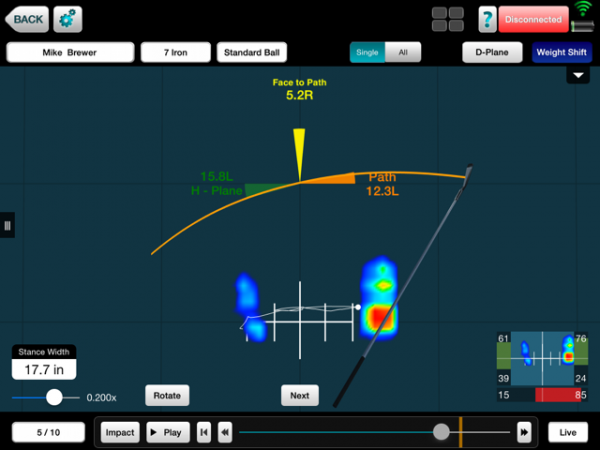
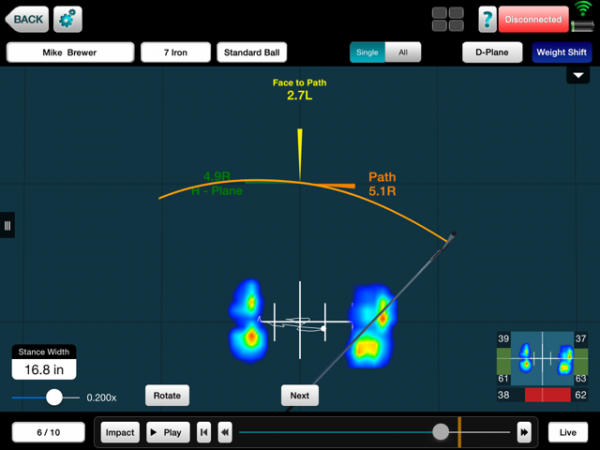










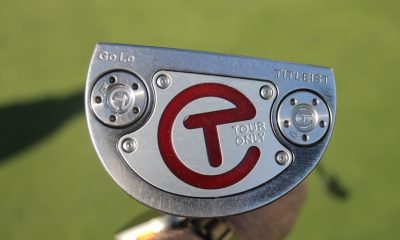

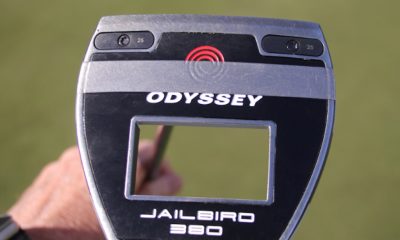

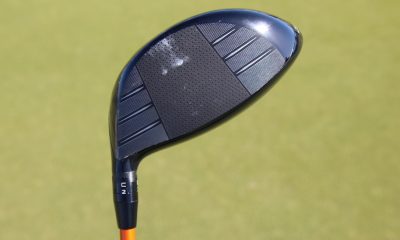



Josh
Jul 31, 2015 at 10:55 am
I’m curious what a left foot bias weight shift would cause on the swing path. This clears up my thoughts on a balance with no weight shift being more beneficial than actually shifting weight.
Sira
Jun 15, 2015 at 3:36 am
I agree with Alex below. Isn’t the ball of your feet= weight shift more toward the ball?
Fade
Jun 14, 2015 at 8:59 pm
Hi Tim, interesting concept and one I need to keep in mind at the range.
Quick observation, if you look a the two images you provide, it looks as though the top one (slice), the student had an open stance. In the bottom one (draw), the student had a closed stance. So, at least with a cursory glance at the images, it wasn’t just weight shift that changed, but the students’ stance (open vs closed) too, which could also affect shot shape. Am I misinterpreting the graphs and seeing something that is not there?
Tim Mitchell
Jun 16, 2015 at 1:06 am
Fade-good observation. The student also significantly changed his lateral center of pressure on his backswing, too (fade swing 85, draw swing 62). The most interesting items of note for this particular golfer was how instinctive and immediate the changes were, just by focusing on his balance. The major dynamic changes that took place to produce a different ball flight was really fun to watch. I can tell you there was no conscious thought or preparation to change ball flight through set up.
Jeff*
Jun 14, 2015 at 7:37 pm
Awesome article. I’m not a teacher, but a good player, and this article says something I’ve seen/experienced myself and shows why. I always called it hip-sway, but it’s a reaction to losing balance. Most players can’t deliver the ball back to the ball the same when they take it back and try and “shift their weight.” The weight gets stuck in the toes because they lost their balance by “shifting.” Nobody thinks about their weight shift when they throw a punch or a pitch. Thanks for the article.
other paul
Jun 14, 2015 at 7:10 pm
I have been trying to move my weight back a bit and I pull hook the crap put of it sometimes. I tend to roll my hands… Coupled with a swing that is usually a few degrees in to out makes it pretty bad.
Neige
Jun 13, 2015 at 8:37 pm
nice. I hope this will help me with my slice.
Steve
Jun 13, 2015 at 9:35 am
In your example, did his swing slow down with weight on heels? I would quess that a driver would produce more on the toes swing, trying to swing to hard. I bet if you would have put a wedge in his hands the swing would be more balanced. Not swinging out of your shoes creates more balance.
Tim Mitchell
Jun 16, 2015 at 1:08 am
His swing speeds stayed similar Steve. In fact, the draw swing was just a little faster.
wpk
Jun 12, 2015 at 7:36 pm
Very nice article. I just heard something about this recently and it hits home. I agree with the other comment about a little bit better description of the images. What’s the orientation?
Alex
Jun 12, 2015 at 5:17 pm
Good article, especially on footwork. I’ve always played my best golf when feeling the weight in my heels. Is it possible that I get more balance this way? I’ve seen for years lessons on tv or the internet by top teachers insisting on your weight on the balls of your feet, but this has never worked for me. How come?
Tim Mitchell
Jun 16, 2015 at 12:54 am
Hi Alex. I would make three comments to your question.
1. “Feel” and “Real” can sometimes be two very different things. Only through measurement can your motion be truly analyzed. Perhaps you’re actually on the balls of your feet during your swing.
2. Golf swings just need to balance out…like a simple algebra problem. If all of your techniques match up, you can play good golf. You don’t need to look too far at unique golf swings like Jim Furyk, Lee Trevino and Paul Azinger to know that you just need to find something that works for you.
3. A linear trace, or a center of pressure that works more over the balls of your feet, most frequently produces a more on plane golf swing. A lot of teachers/golfers prefer that. They argue that it’s a simpler, easier to repeat motion/technique.
Hope that helps!
Alex
Jun 16, 2015 at 10:35 pm
Thanks forma your comment, Tim
John
Jun 12, 2015 at 4:46 pm
I’ve been struggling with hitting the toe on my irons, which I traced to having a too-steep swing. I’ve been struggling to consistently flatten it out, but I do find I’m on my toes quite a bit, so hopefully this is the cause!
Golfraven
Jun 12, 2015 at 4:38 pm
powerful images.
Hippocamp
Jun 12, 2015 at 3:55 pm
Super interesting. But can you explain the images a little more? Doesn’t the first picture show that the weight is mostly on the right heel rather than on the toes? Perhaps I’m just not looking at the images the right way…
Tim Mitchell
Jun 16, 2015 at 1:18 am
Good observation Hippocamp. The article was written based upon the numbers measured by the BodiTrak system versus the coloring of the images. I have found them to be more accurate.
Bryan P
Jun 12, 2015 at 2:34 pm
Interesting… I’ve always been a fade/slicer, I would also say that most the time I feel like I’m on my toes. I will have to give this a shot at the range the next time I’m out! Nice tip.